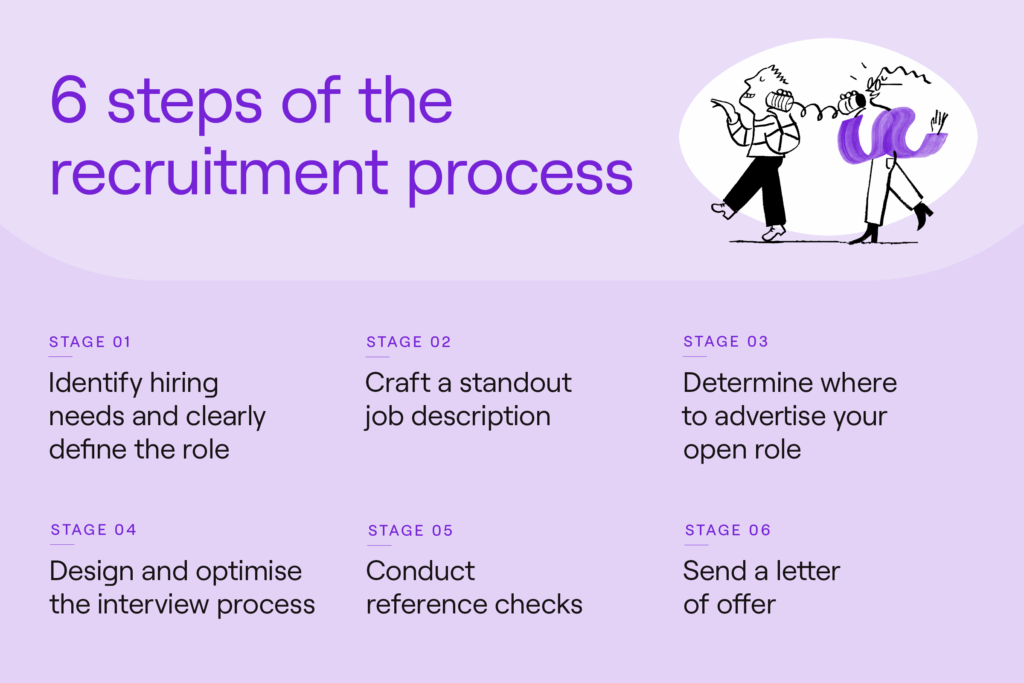
How to Recruit Employees: A Comprehensive Guide for Modern Businesses
Recruiting top talent is the lifeblood of any successful organization. In today’s competitive job market, knowing how to recruit employees effectively is more crucial than ever. This guide provides a comprehensive overview of the recruitment process, from initial planning to onboarding the perfect candidate. Whether you’re a seasoned HR professional or a small business owner, understanding the nuances of modern recruitment can significantly impact your company’s growth and success. Mastering how to recruit employees involves a strategic approach encompassing various techniques and technologies. It’s not merely about filling a vacancy; it’s about finding individuals who align with your company’s culture, possess the necessary skills, and are motivated to contribute to your long-term goals. This guide aims to equip you with the knowledge and tools needed to attract, assess, and secure the best candidates for your organization.
Understanding the Modern Recruitment Landscape
The recruitment landscape has evolved dramatically in recent years. Gone are the days of simply posting a job advertisement and waiting for qualified candidates to apply. Today, successful recruitment requires a proactive and strategic approach, leveraging digital platforms, employer branding, and innovative assessment methods. Understanding these changes is the first step in mastering how to recruit employees.
- The Rise of Digital Recruitment: Online job boards, social media platforms, and company websites have become the primary channels for attracting candidates.
- The Importance of Employer Branding: Candidates are increasingly researching companies before applying, making employer branding a critical aspect of recruitment.
- The Need for Data-Driven Decisions: Analytics and data are now used to track recruitment metrics and optimize the hiring process.
Step-by-Step Guide: How to Recruit Employees
Step 1: Defining the Role and Creating a Job Description
The foundation of successful recruitment lies in clearly defining the role and creating a detailed job description. This document serves as a roadmap for both the recruiter and the candidate, outlining the responsibilities, qualifications, and expectations of the position. A well-crafted job description is crucial for attracting the right candidates and setting the stage for a successful hire. Before thinking about how to recruit employees, you must first understand the role you are trying to fill.
- Responsibilities: Clearly outline the day-to-day tasks and responsibilities of the role.
- Qualifications: Specify the required skills, experience, and education.
- Expectations: Define the performance goals and expectations for the position.
- Company Culture: Briefly describe the company culture and values to attract candidates who align with your organization.
Step 2: Developing a Recruitment Strategy
A well-defined recruitment strategy is essential for attracting the right candidates and streamlining the hiring process. This strategy should outline the channels you will use to reach potential candidates, the timeline for the recruitment process, and the criteria you will use to evaluate applicants. Consider your budget and the urgency of the role when developing your strategy. Thinking strategically about how to recruit employees is key to successful hiring.
- Identify Target Channels: Determine the best online and offline channels for reaching your target audience.
- Set a Timeline: Establish a realistic timeline for each stage of the recruitment process.
- Define Evaluation Criteria: Clearly define the criteria you will use to evaluate applicants, including skills, experience, and cultural fit.
- Budget Allocation: Allocate resources effectively across different recruitment activities.
Step 3: Sourcing Candidates
Sourcing candidates involves actively seeking out potential applicants through various channels. This can include posting job advertisements on online job boards, attending industry events, and leveraging social media platforms. Effective sourcing is critical for building a diverse and qualified pool of candidates. Learning how to recruit employees often starts with effective sourcing techniques.
- Online Job Boards: Utilize popular job boards such as LinkedIn, Indeed, and Glassdoor.
- Social Media: Leverage social media platforms like LinkedIn, Twitter, and Facebook to reach passive candidates.
- Employee Referrals: Encourage employees to refer qualified candidates. [See also: Employee Referral Program Best Practices]
- Industry Events: Attend industry events and career fairs to network with potential candidates.
- Company Website: Showcase job openings on your company website and make it easy for candidates to apply.
Step 4: Screening Applications and Resumes
Screening applications and resumes is a critical step in the recruitment process. This involves reviewing applications to identify candidates who meet the minimum qualifications for the position. Efficient screening can save time and resources by focusing on the most promising applicants. Understanding how to recruit employees also means understanding the importance of efficient screening.
- Automated Screening Tools: Use applicant tracking systems (ATS) to automate the screening process.
- Keyword Matching: Identify keywords in resumes that match the required skills and experience.
- Review Cover Letters: Assess candidates’ writing skills and motivation through their cover letters.
- Check for Red Flags: Look for inconsistencies or gaps in employment history.
Step 5: Conducting Interviews
Interviews are a crucial opportunity to assess candidates’ skills, experience, and cultural fit. Structured interviews, where all candidates are asked the same set of questions, can help ensure a fair and objective evaluation process. Preparing thoroughly for interviews is a key element of how to recruit employees effectively.
- Structured Interviews: Use a standardized set of questions to evaluate all candidates.
- Behavioral Questions: Ask behavioral questions to assess how candidates have handled specific situations in the past.
- Technical Assessments: Conduct technical assessments to evaluate candidates’ skills and knowledge.
- Cultural Fit Questions: Ask questions to assess whether candidates align with your company’s values and culture.
- Virtual Interviews: Utilize video conferencing tools for remote interviews. [See also: Best Practices for Virtual Interviews]
Step 6: Assessing Candidates
Beyond interviews, assessing candidates can involve various methods to evaluate their skills, knowledge, and personality traits. This can include skills tests, personality assessments, and reference checks. A comprehensive assessment process provides a more complete picture of each candidate. Knowing how to recruit employees includes knowing how to assess them properly.
- Skills Tests: Administer skills tests to evaluate candidates’ technical abilities.
- Personality Assessments: Use personality assessments to assess candidates’ personality traits and cultural fit.
- Reference Checks: Contact previous employers to verify candidates’ work history and performance.
- Background Checks: Conduct background checks to ensure candidates have a clean record.
Step 7: Making the Offer
Once you have identified the best candidate, the next step is to make a formal job offer. The offer should include details such as salary, benefits, start date, and job responsibilities. Negotiating the offer can be a delicate process, but it’s important to be transparent and fair. Effectively making an offer is part of knowing how to recruit employees.
- Salary and Benefits: Clearly outline the salary and benefits package.
- Start Date: Specify the start date and any necessary onboarding procedures.
- Job Responsibilities: Reiterate the key job responsibilities and expectations.
- Negotiation: Be prepared to negotiate the terms of the offer.
Step 8: Onboarding New Employees
Onboarding is the process of integrating new employees into the organization. A well-structured onboarding program can help new hires quickly become productive and engaged. This includes providing training, introducing them to colleagues, and familiarizing them with company policies and procedures. The final step in how to recruit employees is effective onboarding.
- Training and Development: Provide comprehensive training to help new hires develop the necessary skills.
- Introduction to Colleagues: Introduce new hires to their colleagues and team members.
- Company Policies and Procedures: Familiarize new hires with company policies and procedures.
- Performance Goals: Set clear performance goals and expectations for new hires.
Tips for Effective Employee Recruitment
Beyond the step-by-step process, there are several key tips that can help you improve your employee recruitment efforts. These tips focus on creating a positive candidate experience, leveraging technology, and continuously improving your recruitment process.
- Create a Positive Candidate Experience: Treat all candidates with respect and professionalism, regardless of whether they are ultimately hired.
- Leverage Technology: Utilize applicant tracking systems (ATS) and other technology tools to streamline the recruitment process.
- Focus on Employer Branding: Promote your company’s culture and values to attract top talent.
- Measure and Analyze Results: Track key recruitment metrics to identify areas for improvement.
- Continuously Improve: Regularly review and update your recruitment process to stay ahead of the competition.
The Importance of Diversity and Inclusion in Recruitment
Diversity and inclusion are essential components of a successful recruitment strategy. A diverse workforce brings a variety of perspectives and experiences, leading to increased innovation and creativity. Implementing inclusive recruitment practices can help you attract and retain a wider range of talent. The best way to how to recruit employees is to be inclusive and diverse.
- Implement Inclusive Recruitment Practices: Ensure that your job descriptions and recruitment materials are inclusive and avoid biased language.
- Reach Out to Diverse Communities: Partner with organizations that serve diverse communities to reach a wider range of candidates.
- Provide Training on Unconscious Bias: Train recruiters and hiring managers on unconscious bias to ensure fair and objective evaluations.
- Monitor Diversity Metrics: Track diversity metrics to measure the effectiveness of your recruitment efforts.
Conclusion
Mastering how to recruit employees is an ongoing process that requires a strategic approach, a commitment to diversity and inclusion, and a willingness to adapt to the changing recruitment landscape. By following the steps outlined in this guide and implementing the tips provided, you can significantly improve your ability to attract, assess, and secure the best candidates for your organization. Remember that effective recruitment is not just about filling vacancies; it’s about building a strong and talented team that can drive your company’s success.

